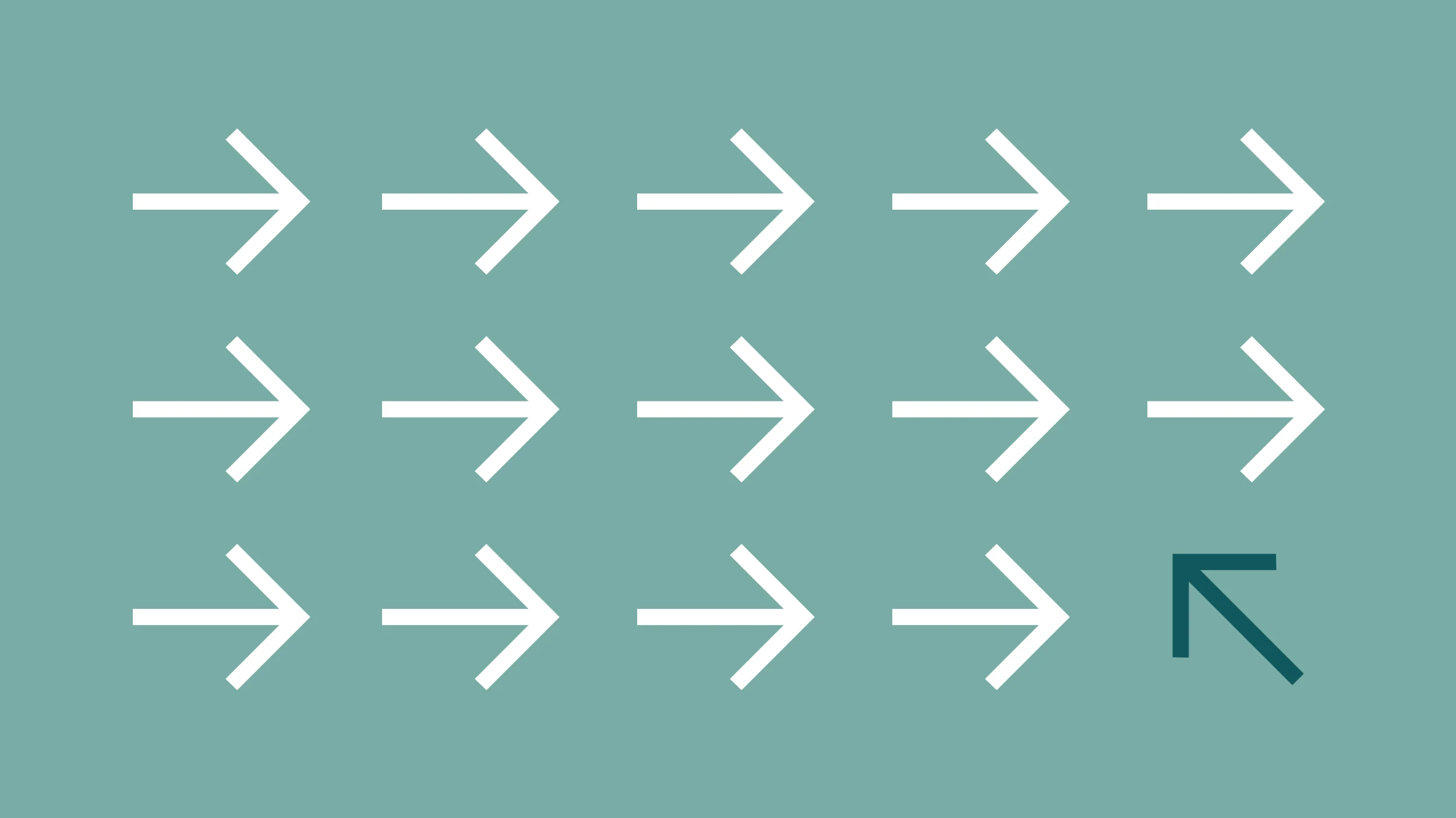
Creating a perfect and seamless customer experience that carries through from the very beginning of an interaction with a potential customer is what every company aspires to.
But how can businesses achieve this successfully?
Why the customer journey matters
It all starts with understanding the customer journey and delivering the right type of message to your visitors.
The customer journey describes a variety of touchpoints by which the customer moves from awareness to engagement and purchase. The journey can have up to 7 stages: awareness, evaluation, consideration, try or examination, buy, repeat and refer.
In this article, we’ll show you what goes through the customer’s mind at each step of the journey, and how consumers can be positively influenced by content marketing.
Influencing Customers With Content
Growing competition and lack of trust in advertising have affected the customer journey and the decision-making process. Business need to adapt accordingly.
In a world where 84% of consumers do not trust advertisements anymore, and where engaging with consumers takes more time than ever before, it’s getting harder for retailers to convert visitors into customers. The growing lack of trust means consumers are no longer interested in brands that try to sell hard. Today’s shoppers are looking for brands that put their customers first and create communities of brand advocates by rewarding loyalty.
Consumers are expecting brands to be more ‘human’ - they want listeners and problem-solvers.
They want to trust again.
In order to trust a company and their products, shoppers go through a considerable amount of research before making a decision and buying online, making the customer journey longer and more competitive.
Last year, 76% of purchase decisions involved online research on Google or Amazon. Traditional marketing is becoming less and less effective as potential consumers look for more information (not ads) before buying online. As a result, brands have turned to content marketing to impact and influence the consumer’s decision throughout the buying journey.
But what is content marketing exactly?
Content marketing, according to the Content Marketing Institute, is a marketing approach focused on creating and distributing valuable, relevant, and consistent content to attract and retain an audience.
6 Benefits of Content Marketing:
Better visibility and brand awareness
Encourages customer relationships
Creates loyalty
Builds trust and credibility through the funnel
Increases organic traffic
Gives your business a thought leader position
Mapping content to the 7 touchpoints of the customer journey
While we now all understand how important content marketing is when it comes to informing browsers and influencing consumers’ buying decisions, it can be hard to know what content to share at each step of the journey. In this section, we’ve broken down how you can map specific content to your audience based on where they are in their customer journey.
1. Awareness
In an era where in-person shopping is slowly disappearing, first impressions need to make a bigger impact. When a new visitor gets introduced to your product or service for the first time, you have to make sure their experience is positive, seamless, and consistent so if they return via a different channel, the experience is still familiar.
It’s at this point in the customer journey where your website is most important. Don’t underestimate the power of visuals and brand identity. If your website is easy to navigate through, is visually appealing, and offers a great customer experience in terms of performance and speed, chances are your new visitor will have a good first interaction with your business, priming them for purchase.
Suggested content:
On-site copy
On-site explainer videos
2. Evaluation
Evaluation is the second stage of the customer buying journey. As the customer hasn’t decided whether or not they’re interested in your business, it’s necessary to create top-of-the-funnel content that may answer any question they may have or give them additional information.
That’s why it’s important to target your audience with great content that will make them feel closer to your product or service. Ideal content can be anything that attracts the customer’s eye, isn’t too long, and instantly creates engagement. A good example is an explainer or product video.
Don’t forget, this piece of content is meant to remind the visitor why they should become one of your customers!
Suggested content:
One-pagers
Videos
Short guides
3. Consideration
You’ve met your visitor at both the awareness and evaluation stages, but the consideration stage is the best stage to build a relationship with your new visitor and give them a reason to choose you over another company.
The strongest reason: trust.
But how can you earn trust? It starts with letting your visitors get to know you better. Blog content helps you engage with your audience on a continuous basis and gives your audience an understanding of who your company is.
Did you know that 92% of people engage more with companies that are known as industry thought leaders?
Writing and publishing blog posts on your website will allow you to develop trust with your visitors while giving them more information about your company and your product or service. Time to start blogging!
Suggested content:
Blog posts
Infographics
Guides
4. Examination
This stage of the customer journey may not apply to you depending on what your business offers. But if you have a way of letting interested customers try your product or service before they make a purchase, consider it. It’s a real challenge to sell online, and with people trusting brands less and less, trying a product allows them to form an opinion and make a decision on their own terms. Let them see what it’s like to be a real customer.
At this stage, your potential customer is probably having a look at what your competitors can offer them. If you can’t let them try your product or service, you should provide in-depth information about your business. Give them access to a guide or white paper that will help them understand your service or product, and make them feel closer to your brand values.
At the same time, make sure you’re maintaining your brand image and identity, which can make the decision-making process easier. It’s time to make them fall in love with your brand identity, not just your product. Your brand image can make the difference and bridge the gap from trying to buying.
Suggested content:
White papers
Guides
In-Depth Videos
5. Buy
Your visitor is ready to buy. You’ve convinced them that you’re the best choice, but they’re still looking for reassurance. Your job is to provide that reassurance and keep their focus.
Customer testimonials, examples of customer experiences, or any kind of third-party validation works well. It’s also crucial to keep your visitors engaged, so don’t forget social media ads and little email reminders that say something to the effect of - “You’ve got something in your basket, finish your transaction now!”
By creating a sense of urgency or showing them that there’s only one step left before they make a purchase, you’re encouraging your visitor to complete the transaction in an easy way
Suggested content:
Customer testimonials
Customer experiences
Third-party validation
6. Repeat
You’ve won a new customer! Your content strategy and efforts have paid off. But the journey isn’t over. If you’re looking to retain existing customers, you’ve got to pay attention to your customer experience.
60% of consumers have higher expectations for customer service now than they did just one year ago.
Motivating repeat business is difficult but that’s where customer advocacy comes in. Consider including your existing loyal customers into your content strategy by leveraging the ways they’ve engaged with you.
Reading success stories from other happy customers, establishing a clear social media strategy that utilses user-generated-content, and using the same tone across all channels will encourage engagement from your recently converted customers.
Finally, go the extra mile to meet and exceed your customers’ expectations! 76% of consumers say they view customer service as the true test of how much a company values them.
Suggested content:
Success stories/Case Studies
Social posts and reviews
User-generated content
7. Refer and Review
If your customers have been satisfied with their experience, they’ll happily tell other browsers. Don’t be afraid to ask for referrals or for reviews- email is usually the best way to do it but you can also utilise platforms such Trustpilot, especially if you’re looking to build your reputation!
As for referrals, an incentive can help - offer them a discount on their next order, or free delivery if they bring in new business. This strategy also keeps your customer engaged, increasing the likelihood that they become repeat customers.
Suggested content:
Emails
Reviews
Surveys
Knowing your customer at every stage of the customer journey
As retailers approach the challenge of converting visitors into customers, content marketing is becoming the go-to marketing tool to influence the customer experience and journey.
The key to a successful customer journey is knowing how to implement trust throughout the different stages of the process. Owned content and user-generated content encourage consumers to learn more about your business, your product or service, and how your customers feel about you.
If you’re interested in the impact of content on the customer journey, download IMRG’s 2017 report and learn how online reviews can influence the customer decision-making process too.



